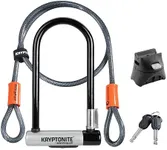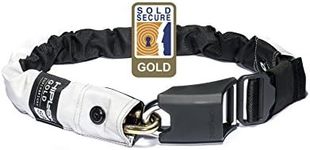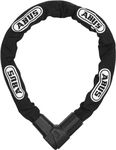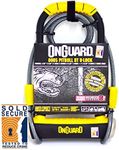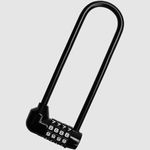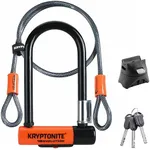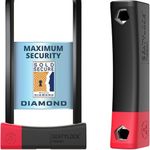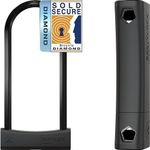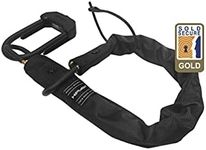Buying Guide for the Best Bicycle Locks
Choosing the right bicycle lock is crucial to ensuring the security of your bike. With the right lock, you can deter thieves and protect your investment. When selecting a bicycle lock, consider the level of security you need, the convenience of carrying and using the lock, and the environment in which you'll be using it. Different locks offer varying levels of protection, so it's important to match the lock to your specific needs and circumstances.Lock TypeThe type of lock is a fundamental aspect to consider. Common types include U-locks, chain locks, cable locks, and folding locks. U-locks are known for their strength and are ideal for high-theft areas, but they can be heavy and less flexible. Chain locks offer flexibility and strength, suitable for securing multiple parts of the bike, but they can be cumbersome to carry. Cable locks are lightweight and easy to transport, making them convenient for low-risk areas, but they offer less security. Folding locks provide a balance between security and portability, being compact and relatively strong. Choose a lock type based on the level of security you need and how easy it is for you to carry and use.
MaterialThe material of the lock determines its strength and resistance to cutting or breaking. Hardened steel is commonly used for high-security locks due to its durability and resistance to bolt cutters and saws. Some locks may use a combination of materials to enhance security while keeping the weight manageable. When choosing a lock, consider the environment where you'll be parking your bike. If it's a high-risk area, opt for a lock made from hardened steel or similar robust materials. For lower-risk areas, a lighter material may suffice, offering a balance between security and ease of transport.
Locking MechanismThe locking mechanism is the part of the lock that secures it in place. Common mechanisms include key locks and combination locks. Key locks are generally more secure, as they are harder to pick, but you need to keep track of the key. Combination locks offer convenience since you don't need a key, but they can be less secure if the combination is easy to guess. Consider your personal preference and the level of security you need. If you tend to lose keys, a combination lock might be more suitable, but ensure it has a complex code. For maximum security, especially in high-theft areas, a key lock is recommended.
Size and WeightThe size and weight of a bicycle lock affect its portability and ease of use. Larger and heavier locks typically offer more security but can be cumbersome to carry, especially if you need to transport them frequently. Smaller and lighter locks are easier to carry but may not provide the same level of security. Consider how often you'll be carrying the lock and the level of security you need. If you commute daily and need to carry the lock with you, a balance between weight and security is important. For occasional use or when security is paramount, a heavier lock might be acceptable.
Security RatingMany locks come with a security rating provided by independent testing organizations. These ratings help you understand the level of protection a lock offers. Higher ratings indicate better security, often involving resistance to cutting, picking, and other forms of attack. When choosing a lock, consider the security rating in relation to where you'll be using it. In high-theft areas, opt for a lock with a high security rating. For areas with lower theft risk, a lock with a moderate rating may be sufficient. Always aim for the highest security rating within your practical needs to ensure your bike is well-protected.

